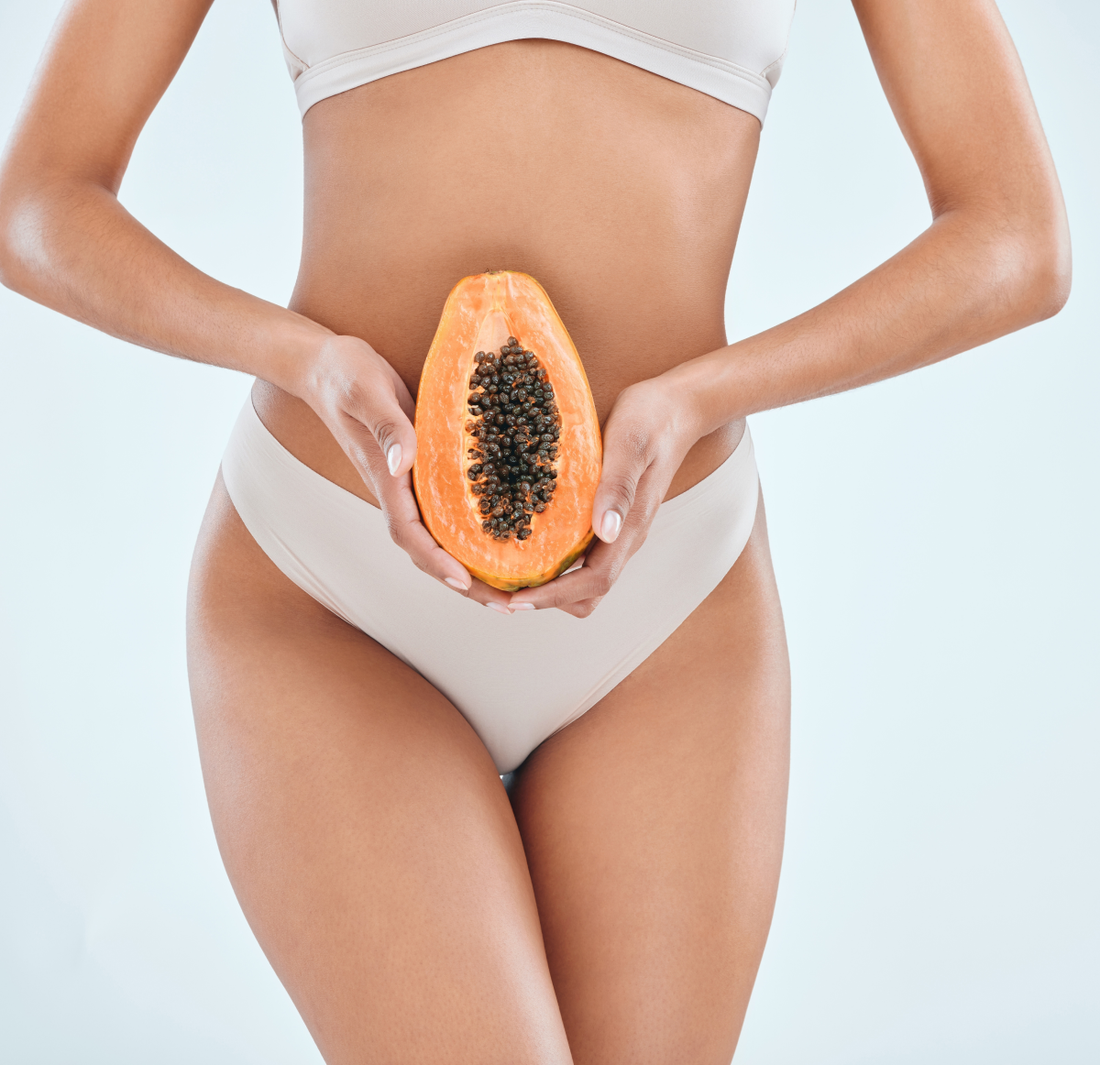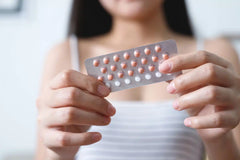Why Am I Dry… Down There?


Your work, upcoming vacations, updates about your kids – these are topics women in their perimenopausal and menopausal years often chat happily about over coffee or brunch with friends. The topic of vaginal dryness, on the other hand? Not so much. Yet, if you were to poll your friends, you’ll likely find that a significant proportion of them – between 30-57% of premenopausal and postmenopausal women, according to recent estimates – experience this life-disrupting condition that puts a damper on libido, sex, and daily life. (Source, Source)
Read on to learn what might be causing you to be dry down there and potential solutions that can help improve vaginal lubrication, daily comfort, and reignite your sex life!
Changing Hormones and Vaginal Dryness
If you are a midlife woman, you might be wondering, why am I dry down there? One possible explanation is that you may be experiencing alterations in hormone levels that hit women in their perimenopausal and menopausal years. In case you need a refresher, perimenopause is the gradual transition from the reproductive years to menopause; it marks the last years of a woman’s “reproductive life.” Menopause, on the other hand, is the point 12 months after a woman's last period and typically occurs when she is in her late 40s or early 50s.
As a woman, your vulva and vagina contain receptors for the hormones testosterone and estrogen. The interaction of these hormones with receptors promotes vaginal lubrication. When testosterone and estrogen decline during perimenopause and menopause, lubrication follows suit, leading to the uncomfortable experience of vaginal dryness. (Source)
Interestingly, research also suggests that changes in the vaginal microbiome, including a reduction in protective Lactobacillus crispatus, in midlife may play a role in vaginal dryness. (Source)
What Can You Do About Vaginal Dryness?
You’re not destined for vaginal dryness once you hit midlife! Several strategies can help your body’s ability to naturally lubricate.
As mentioned above, hormone decline is associated with symptoms of vaginal dryness, especially estrogen depletion. Supporting healthy estrogen levels using a bioidentical topical estrogen serum may help maintain vaginal lubrication. (Source) Estriol (E3), a form of estrogen, has been shown to support healthy vaginal tissue and vaginal microbial balance as well as improved skin thickening and quality. (Source, Source, Source).
Another way to support the vaginal microbiome which can in turn aid tissue health is to avoid factors that disrupt the vaginal microbiota, such as excessive antibiotic use, vaginal cleansers, and feminine hygiene products. Managing stress is also crucial! (Source)
Eating foods that contain phytoestrogens may also support healthy vaginal lubrication by increasing estrogen levels. Phytoestrogen-containing foods include organic soy products like tofu and tempeh, flaxseed, sunflower seeds, chickpeas, and split peas. (Source)
If you’re still struggling with dryness, a high quality vaginal lubricant can ease the discomforts of dryness down there – especially during sex. Look for a water-based lube that doesn’t contain potentially irritating ingredients like glycerin. This sugar-derived substance may kill good, protective microbes in the vagina, such as Lactobacillus crispatus and parabens, which may actually interfere with normal estrogen receptor function, adding insult to injury when it comes to female hormone balance. Avoid oil-based lubricants too, which can break down latex in condoms. (Source, Source)
Interestingly, laser therapy is emerging as another potential option for supporting healthy vaginal lubrication. Talk with your doctor to determine whether this might be a good option for you. (Source)
The Bottom Line on Vaginal Dryness
Navigating the journey of perimenopause and menopause can be challenging, but understanding and addressing vaginal dryness doesn't have to be! Embracing natural strategies, such as estrogen replenishment, supporting a balanced vaginal microbiome, eating phytoestrogen-rich foods, and using a non-toxic water-based lubricant may support healthier vaginal tissue, lubrication, and improve your overall well-being.
With the right tools and knowledge, it is possible to thrive during perimenopause and menopause! Embrace these natural strategies, listen to your body, and celebrate this new chapter confidently and comfortably. And remember, always check with your healthcare practitioner if you’re needing additional advice and support!
References
Brotman, R. M., Shardell, M. D., Gajer, P., Fadrosh, D., Chang, K., Silver, M., Viscidi, R. P., Burke, A. E., Ravel, J., & Gravitt, P. E. (2014). Association between the vaginal microbiota, menopause status, and signs of vulvovaginal atrophy. Menopause (New York, N.Y.), 21(5), 450–458. https://doi.org/10.1097/GME.0b013e3182a4690b
Grady, D. & Barrett-Connor., E. (2012). Menopause. In L. Goldman & A.I. Schafer (Eds), Goldman’s Cecil Medicine 24th ed. (pp. 1565-1571). https://doi.org/10.1016/B978-1-4377-1604-7.00248-7
Hung, K. J., Hudson, P. L., Bergerat, A., Hesham, H., Choksi, N., & Mitchell, C. (2020). Effect of commercial vaginal products on the growth of uropathogenic and commensal vaginal bacteria. Scientific Reports, 10(1). https://doi.org/10.1038/s41598-020-63652-x
Palacios, S. (2009). Managing urogenital atrophy. Maturitas, 63(4), 315–318. https://doi.org/10.1016/j.maturitas.2009.04.009
Paraiso, M. F. R., Ferrando, C. A., Sokol, E. R., Rardin, C. R., Matthews, C. A., Karram, M. M., & Iglesia, C. B. (2019). A randomized clinical trial comparing vaginal laser therapy to vaginal estrogen therapy in women with genitourinary syndrome of menopause. Menopause, 1. https://doi.org/10.1097/gme.0000000000001416
Shardell, M., Gravitt, P. E., Burke, A. E., Ravel, J., & Brotman, R. M. (2021). Association of vaginal microbiota with signs and symptoms of the genitourinary syndrome of menopause across reproductive stages. The Journals of Gerontology: Series A, 76(9), 1542–1550. https://doi.org/10.1093/gerona/glab120
Sievert, L.L., Sharmeen, T., Begum, K., Shanthi Muttukrishna, Chowdhury, O., & Bentley, G. R. (2023). Frequency of phytoestrogen consumption and symptoms at midlife among Bangladeshis in Bangladesh and London. Nutrients, 15(17), 3676–3676. https://doi.org/10.3390/nu15173676
Traish, A. M., Vignozzi, L., Simon, J. A., Goldstein, I., & Kim, N. N. (2018). Role of androgens in female genitourinary tissue structure and function: Implications in the genitourinary syndrome of menopause. Sexual Medicine Reviews, 6(4), 558–571. https://doi.org/10.1016/j.sxmr.2018.03.005
Waetjen, L. E., Crawford, S. L., Chang, P.-Y., Reed, B. D., Hess, R., Avis, N. E., Harlow, S. D., Greendale, G. A., Dugan, S. A., & Gold, E. B. (2018). Factors associated with developing vaginal dryness symptoms in women transitioning through menopause. Menopause, 25(10), 1094–1104. https://doi.org/10.1097/gme.0000000000001130


